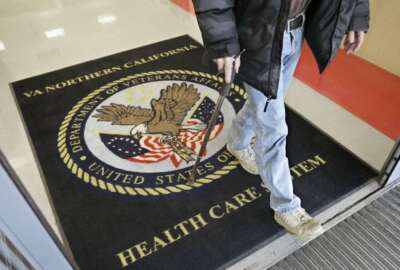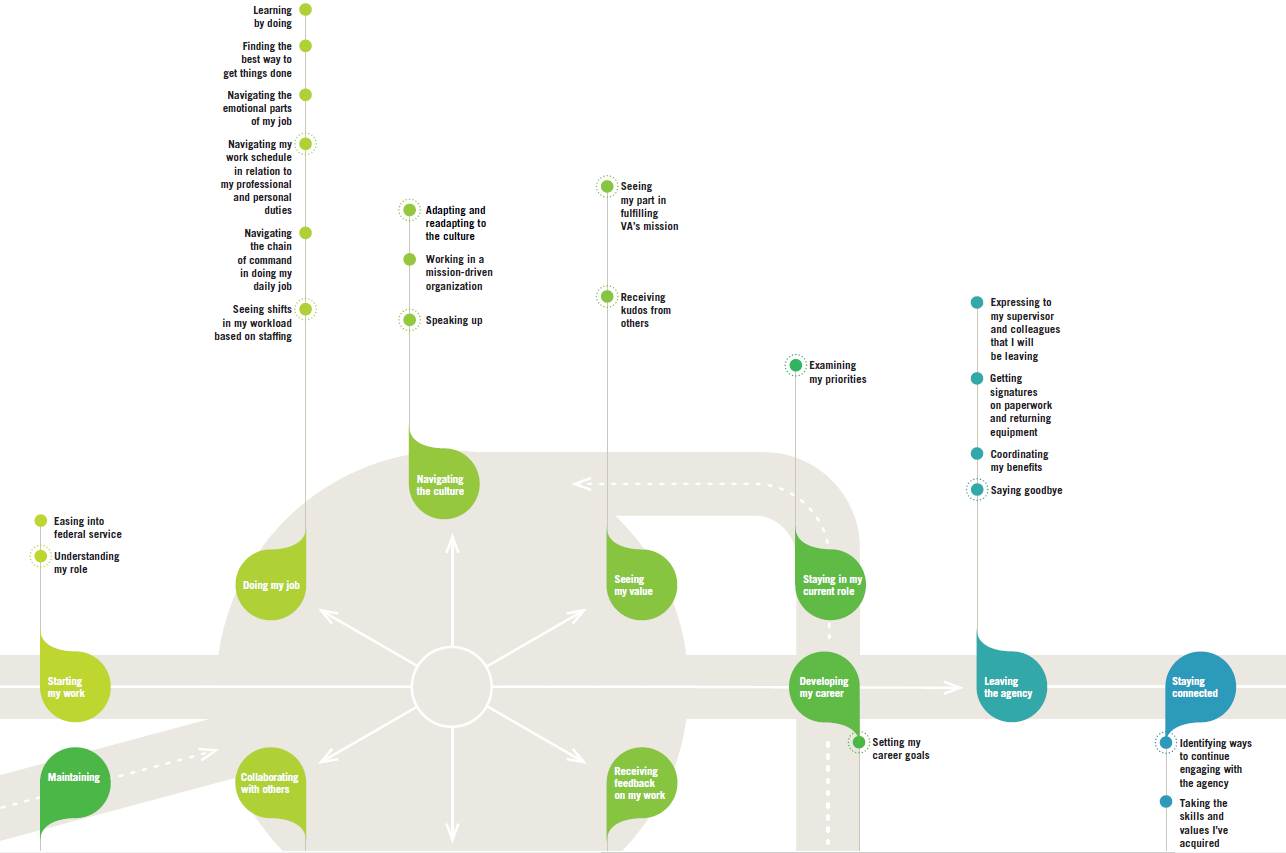

Department of Veterans Affairs has also developed employee journey map, which describes key career moments for its workforce. VA said it's using the map to create...
With nearly five years of experience under its belt, the Department of Veterans Affairs has some practice with the art of prepping, mixing and baking customer experience into its organization.
It published a new CX “cookbook” Tuesday, which details the key ingredients and recipes that might help agencies embed customer experience within their organizations, as well as a new report summarizing VA’s own CX journey.
“We felt it was imperative that we share our lessons learned and what works when you try to apply data, tools, technology and engagement to better serve [the customers],” Lynda Davis, VA’s chief veterans experience officer, said in an interview.
VA is one of the agencies leading the Trump administration’s efforts to improve customer service across government.
The new cookbook describes eight categories where agencies can embed CX strategies, as well techniques they can use to “bake” those principles into their operations and culture.
A recipe for folding CX into governance, performance metrics, human resources and acquisitions, for example, lists a 24-to-26 month “bake time.”
It suggests including CX into performance plans for senior leaders and GS employees, as well as classifying position descriptions with customer experience principles.
Another recipe describes how agencies can secure funding for its CX programs through a six-to-12 month cook time. It details the steps agencies should take to, for example, “authorize a line item of fenced funding specifically for CX.” Agencies should be prepared to compete with other program needs for funding, the recipe warns.
The CX cookbook is based on the lessons VA has learned throughout its customer experience journey, which began in earnest back in 2015, Davis said. But it also details experiences from other federal agencies, including the Education Department’s Office of Federal Student Aid, the Bureau of Trust Funds Administration and others.
For VA, the department has found ways to embed CX into its organization, program and policies.
It published its first-ever CX policy in 2018 and codified those principles in its code of federal regulations a year later. The department will soon publish a new CX directive, which will describe how VA can continue to hardwire customer experience principles into its policies, regulations, legislation and other programs.
VA is finalizing the directive now, Davis said.
“We need to make sure that everything we have is tied to the expression of customer service, so it is not dependent on personality and so it is a permanent part of our culture,” she said.
For VA, embedding customer experience into the department’s culture requires training and instruction for all employees.
More than 100,000 employees have taken VA’s “own the moment” customer service training. Davis said the program has taught employees across the department how to interact and connect with veterans in a consistent way.
“Customer experience and customer service is not just the domain of subject matter experts [with] a handful across government,” Davis said. “It’s everybody’s job. We want to help them be fully equipped to do that.”
It’s why VA is also partnering with the Veterans Health Administration to launch a new customer experience institute. Employees will move through a specific CX curriculum for a few weeks and then pick a project where they can apply those lessons directly within their own VA facilities.
The department is piloting the institute first within VA’s patient experience program. But ultimately, Davis hopes the institute serves as a place where the department can collect best practices from other agencies and embed them within VA training and educational opportunities for its employees.
VA has created 45 “journey maps” for veterans, their families, caregivers and others over the last five years. The maps describe moments that matter for veterans as they enter active-duty service and eventually transition out of the military and begin using VA services.
Similar to the journey maps VA created for its veteran customers, the department recently developed a comparable timeline of moments that matter to its employees.
“Unless the employees are really respected and treated in the same way in their experience at VA, then they will not be able to provide the customer service that they want to and that we want to have them do,” Davis said.
The VA employee journey map describes everything from the job search to navigating the VA culture and receiving a first performance evaluation.

“What happens when they do onboarding? What happens with professional development? What happens when they’re trying to decide to [stay] or to retire?” Davis said. “We understand now that just like we do for our veterans with the journey maps and moments that matter, that our employees have key areas that are important to them. We know, for instance, that one of the priority moments that matter is understanding how to develop my career.”
Davis said VA offices are reviewing these steps in the employee journey map and are discussing ways to improve the experiences. The department is also working with the Office of Management and Budget to deploy the employee journey map concept more broadly across government.
“Our goal is to enable and empower to deliver the best customer experience — and to retain them,” Davis said.
Copyright © 2025 Federal News Network. All rights reserved. This website is not intended for users located within the European Economic Area.
Nicole Ogrysko is a reporter for Federal News Network focusing on the federal workforce and federal pay and benefits.
Follow @nogryskoWFED

